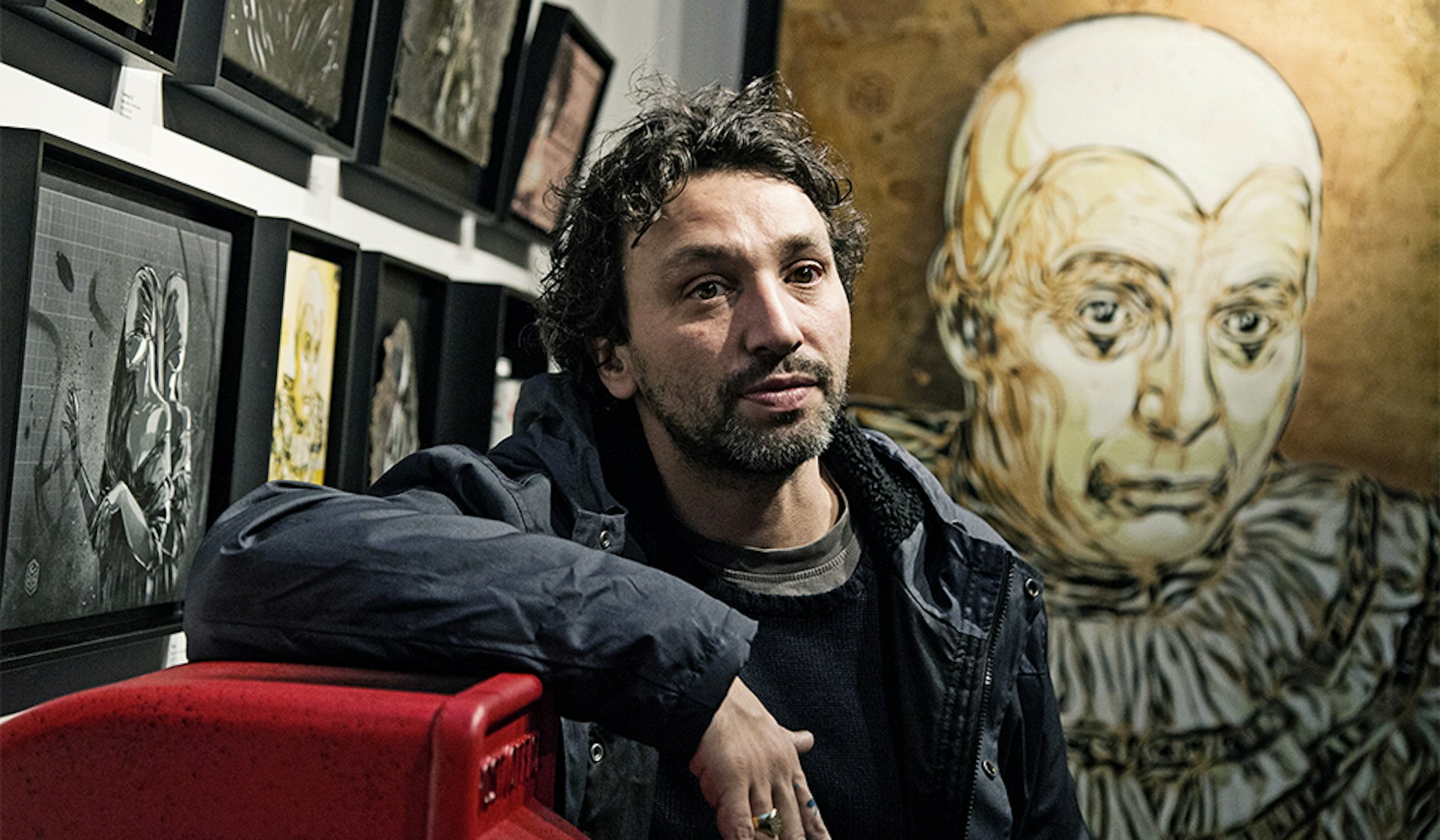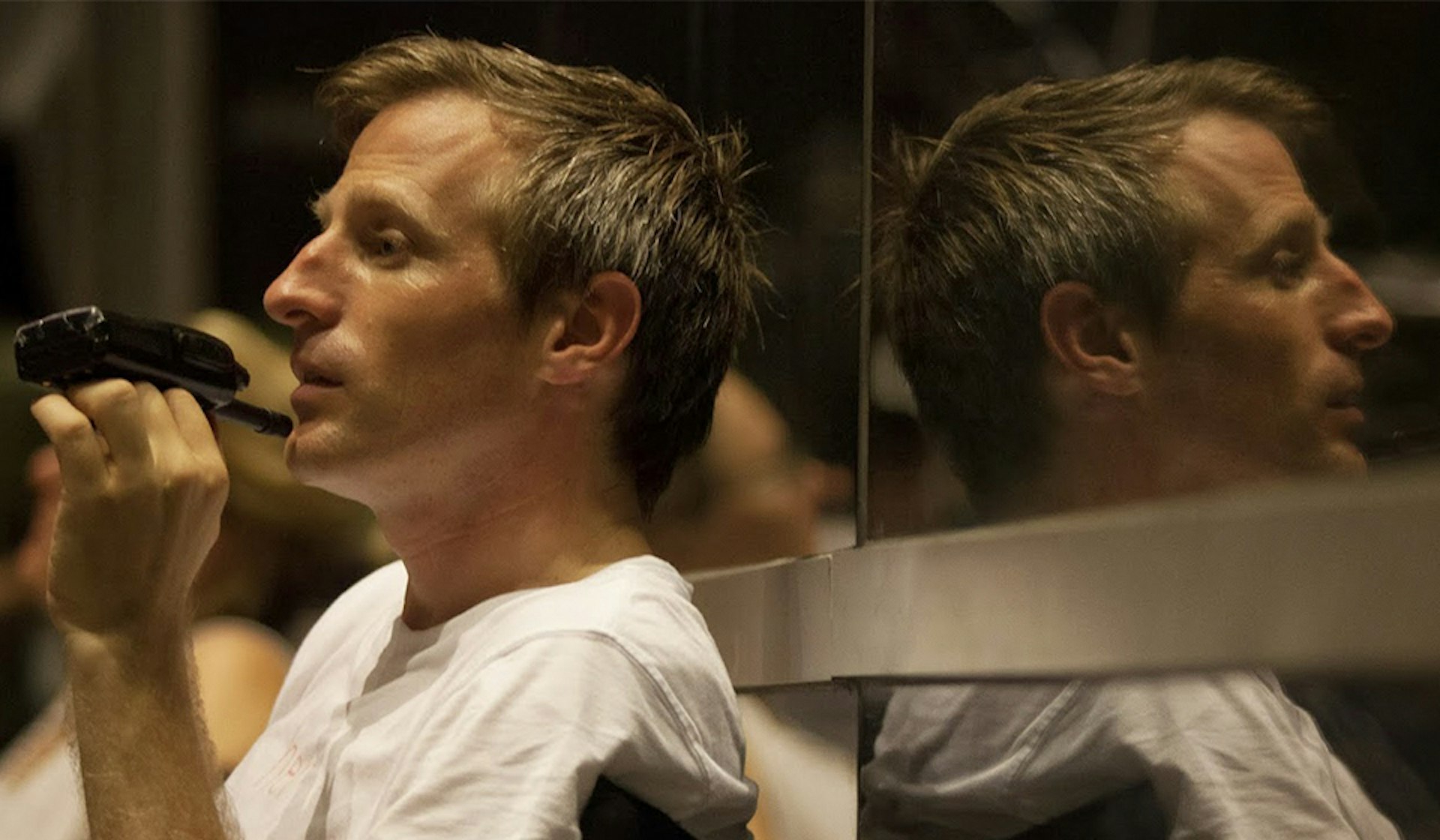
C215
- Text by Amrita Riat
- Photography by Teresa Madeline
Having traipsed around Brick Lane, we finally find the gallery and respite from the spitting rain. There are small bursts of commotion, it’s one hour till opening – we’ve definitely arrived at a bad time. We stride in anyway and are introduced to Christian Guémy, the guy we just walked straight past.
Also known as C215, he’s the man behind the painted opuses propped up all around us.
“Hi nice to meet you Christian, shall we sit down for a chat?”
Silent. Staring. Unsmiling.
After a jarring session of manoeuvring him around his works for some brooding shots, we pass his ten year old daughter on the way out to a café across the street, and Christian instantly relaxes in her presence as well as ours. And from that point on, the conversation flows.
Tell me a bit about yourself…
I paint stencils in the streets, mainly portraits without authorisation but I was not supposed to be an artist, I think it’s a very sad job. I wish I had a better job helping other people and not so selfish. Being an artist is so egocentric, such a superficial job – maybe that’s why I did this exhibition with costumes and make-up on these portraits – maybe it’s about the loss of identity. Also maybe in the beginning I was thinking about Amy Winehouse’s tattoos and body transformation.
Have you got a tattoo?
No.
Would you ever get one?
No! Haha! No I never use make-up. I never put mask. I never put veil. You can see through my face very easily – my emotions.
How did you get into street art?
Twenty five years ago as a teenager I began to write stuff on the walls – bullshit – messages to my friends and love messages to impress girls, and to paint my own Vespa in true colour in scale one so that anybody could recognise me without signing. I was not C215, I had no name.
How did you become C215?
C215 was a modern poetry name. I published two books with each of my little funny poems being illustrated by urban artists in Paris, and most of them had very weird nicknames. I started painting with them also – I thought before going back to work I would do a few stencil portraits of my daughter for her to see, it would lead nowhere – but immediately it was a big response.
Why stencil?
Because it was very quick, and at the period it was not possible to paint in the streets without authorisation at all, especially in Paris. If I was beginning today I would certainly not begin with stencil because now worldwide you get so many walls that artists can ask to paint on. The context has changed.
Where do you like to work?
I’ve done classics in Italy, Arabs in Morocco, animals in New Delhi. Whatever I do, I just try to do be contextual. To connect a stencil which is meant to transform, with a reality that you are not supposed to transform. It’s a contrary game you know? But I like to work far away from western cities, the last time I had a lot of fun was in Dakar in Senegal and the next time will be in Kingston in Jamaica, 1st of March.
Which artists are you a fan of?
I especially like Swoon and I like Banksy.
You are often compared to Banksy…
I’m so French, he’s so English, what he’s doing is so witty, what I’m doing is so emotional – he’s not even a stencil artist. He’s such a genius, I’m such an ordinary guy! People can compare me to a flower, I don’t care.
Don’t you believe you make people contemplate?
It’s terrible, it’s terrible. So sad that people need to see a painting in the street to think! I don’t want to believe they’re stupid enough to wait for my paintings to do that. Don’t turn me into a pig! Don’t make me believe I could be useful in anyway with painting in the street. It’s about consciousness you know? You can say that kind of shit when you are 20 or 25, “I want to change the world!” When you’re 40, you just want to change your life.
How would you define yourself?
I’m very normal, or I pretend to be. That’s what I want to be, I want to be normal.
Is that what matters to you?
I would love! I think it’s good for the kids of the bourgeoisie – when you come from a popular family with a difficult background, what you dream of is an ordinary life. I wish to have a garden, dogs, bikes and kids. I was born almost an orphan, so mother of Nina and her family support me a lot, my daughter supports me a lot, but now she’s ten – we say in French ‘place aux jeunes’ – you need to make room for the kids. Anything I do is intended for her because later, she will have something left from her father.
At forty you are a very nice age, because you’re completely ripe – you are not old and physically you are still okay, but at the same time you are not a kid anymore, you know exactly what is the length of life and that time is short. It’s very introspective, that’s maybe the meaning of the show: that I’m not ‘in love’.
The Back to Black exhibition was at StolenSpace gallery, London.
